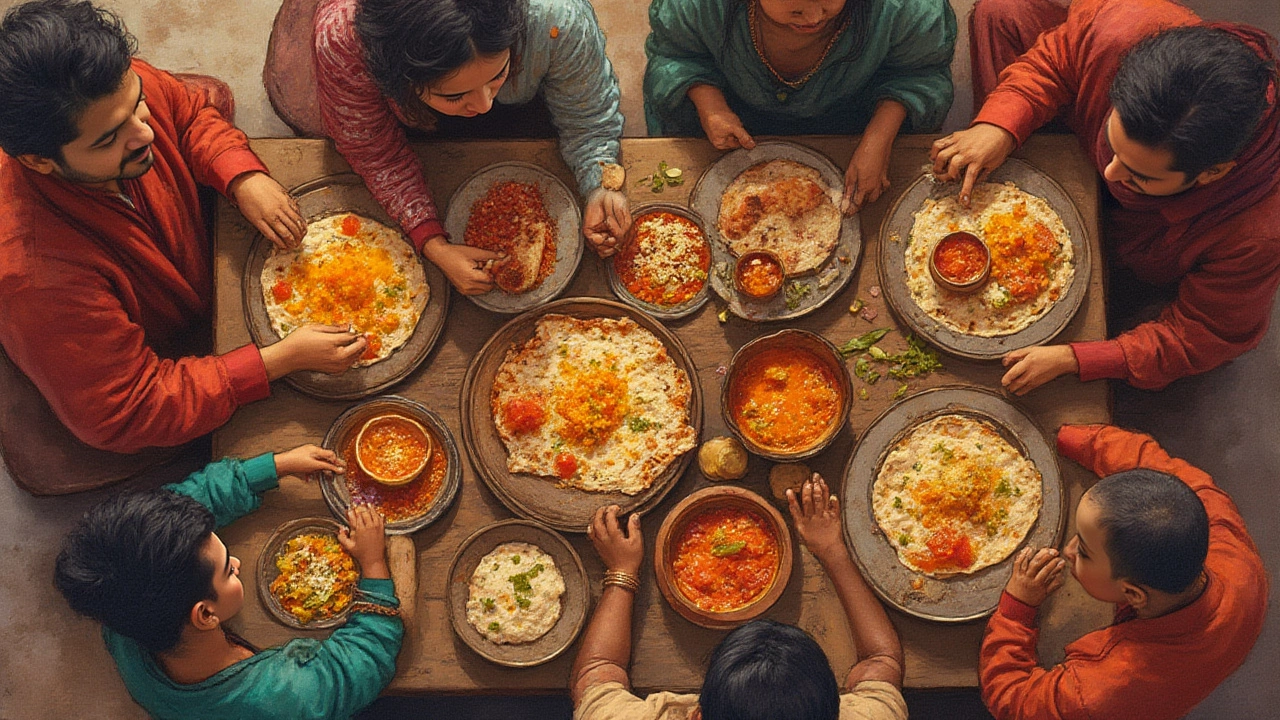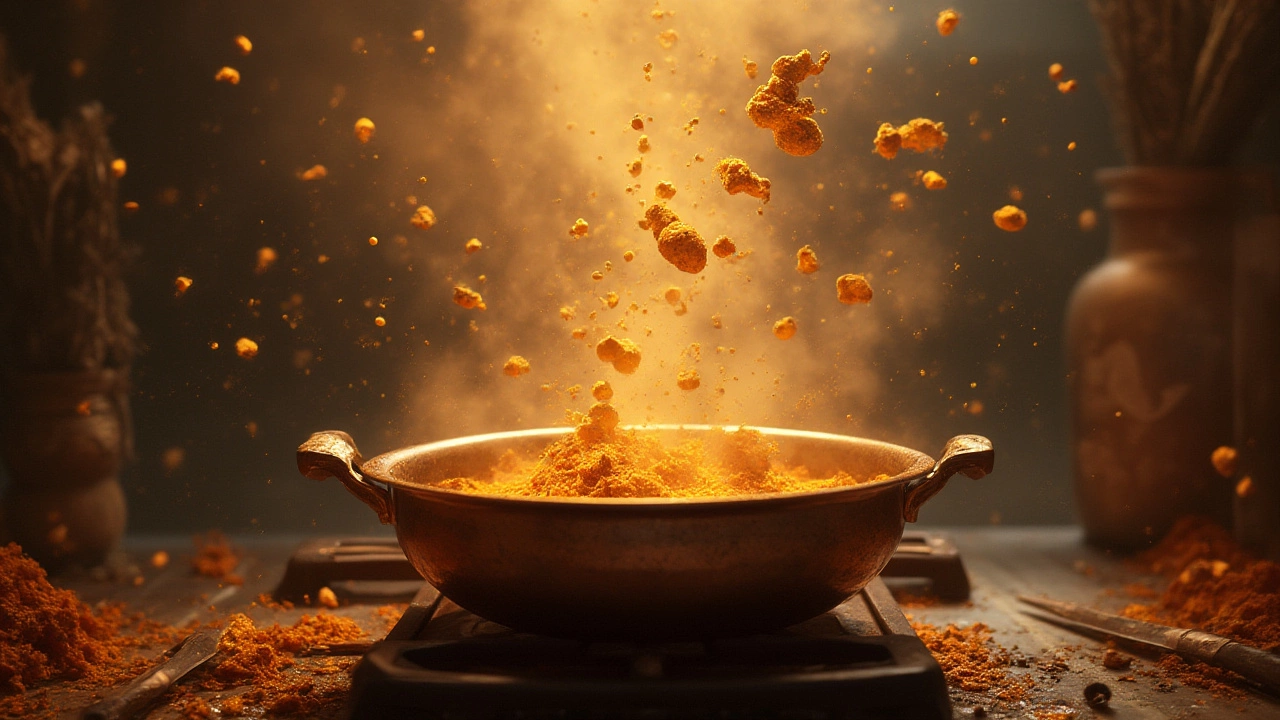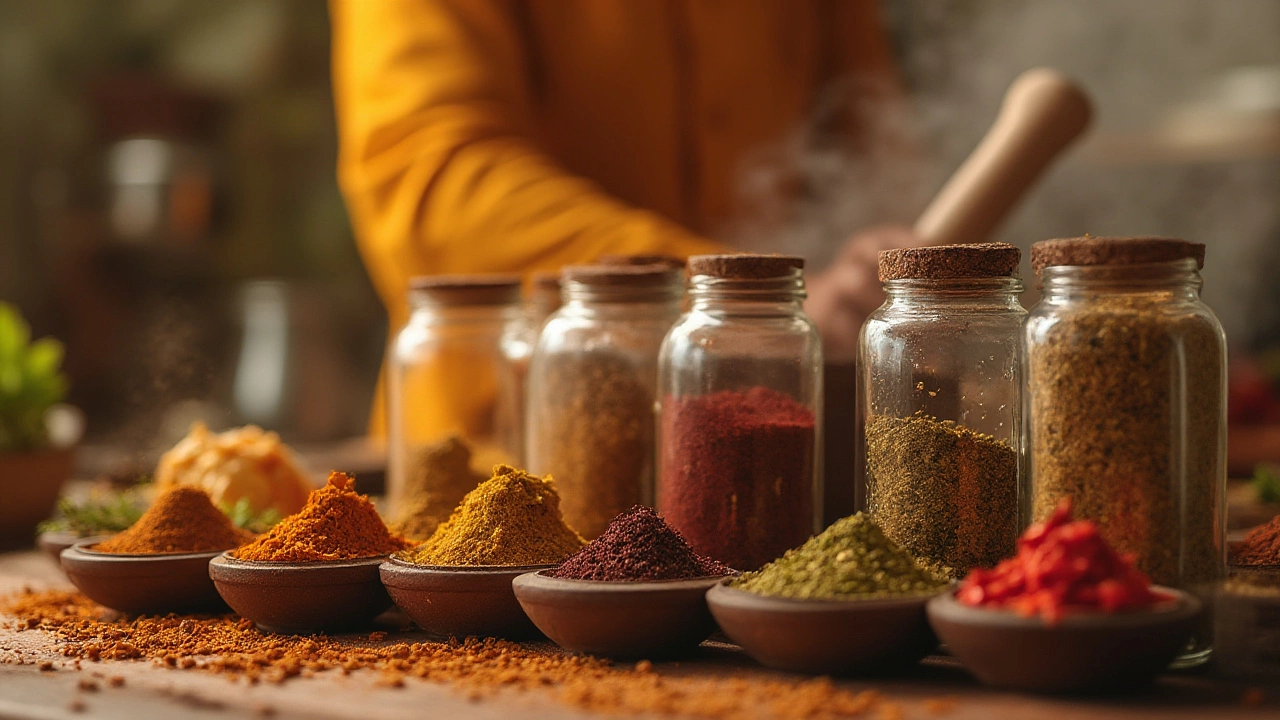Ever felt like your homemade curry just doesn’t pop with that restaurant-level savor, even though you followed the recipe to the last spoonful? There’s a reason: depth. Real curry depth isn’t just about heat, or even just blending a bunch of spices. It’s this magic that makes you want to keep going back for more, even when your nose is running. A curry with real depth tastes like it has a story to tell — each bite layered, balanced, and full. So what’s behind this mystery? Let’s break down how your curry can go from flat to fab, with tricks that are known in home kitchens across Asia, and some facts you might not guess if you’re sticking just to the recipe card.
The Heartbeat of Curry: Spices (and How You Treat Them Matters)
Most people think it’s all about which spices you use — cardamom, cumin, coriander, cloves, turmeric, ginger, garlic, cinnamon, maybe a sneaky bay leaf. Yes, those matter. But the real hero is how you handle your spices. Toasting, grinding, blooming—these aren’t just fancy words chefs throw around to sound complicated. They are what pull the true character out of those dusty jars sitting in your pantry. For instance, dry toasting whole spices wakes up natural oils and deepens their flavor. You’ll smell a change within a minute of heating cumin seeds in a dry pan—a musty, popcorn-like aroma that signals they’re about to make magic in your pot. Then, grinding those toasted seeds fresh—ideally in a spice grinder or even a good mortar and pestle—lets their volatile compounds swirl right into your dish. Pre-ground spices lose muscle after a few months, so don’t shy away from going old school.
Let’s talk blooming. This is pouring your spices into hot oil or ghee before you add any liquid. You want that sizzling sound. Why? Because spices have fat-soluble flavors. Heating them directly with fat—like coconut oil or mustard oil—unlocks essential oils that water just won’t touch. Studies from Indian culinary science institutes show the volatile oils in spices like cardamom, cinnamon, and cloves double their detectable fragrance when bloomed in fat compared to water. That’s a simple step, but it often makes all the difference between flat and boldly rich curries. Want numbers? A 2023 study from the National Institute of Food Technology in India compared spice oil extraction rates: cumin and coriander released up to 70% more flavor compounds in fat than in water alone. That’s a huge jump. If your curry feels one-note, chances are your spices didn’t get to bloom properly.
But think layering, not just dumping. Add whole spices at the start (bay leaf, star anise), ground spices mid-way (garam masala, turmeric), and finish with a sprinkle of something bold at the end (like chaat masala or freshly chopped green chilli). Each step brings a different layer to your sauce. It’s a bit like building a playlist—from moody background beats to a punchy finale.
And fresh is best, but even dried herbs can shine if you rub them with your fingers before adding—to wake up essential oils. If you’re after true restaurant-level curry, don’t forget the magic of curry leaves, fenugreek, and ground fennel. Even a pinch can shift your curry’s taste into a whole new gear.
Let’s pause and look at a quick spice effectiveness comparison:
| Spice | Flavor Pop (Dry Toasted) | Flavor Pop (Bloomed in Fat) | Flavor Pop (Just Simmered in Water) |
|---|---|---|---|
| Cumin | Strong | Very Strong | Mild |
| Coriander | Good | Very Good | Muted |
| Cardamom | OK | Excellent | Mild |
| Mustard Seed | Strong | Very Strong | Flat |

Building Background: The Power of Bases, Aromatics, and Secret Boosters
Let's be honest—spice alone won’t give you a deep curry. What you put under your spice layer is just as critical. Onions, garlic, and ginger are the trio you’ll see in nearly every curry, from Malaysia to Pakistan. How you treat them sets your depth. For example, long, slow-cooking of onions brings out natural sugars and creates caramel notes that sing with spice rather than scream. Don’t rush this step. Get your onions deep gold, almost sweet, and you’ll notice that lush background the best curries have. Skipping this by just sautéing for a couple of minutes leaves you with sharp, unfinished flavors.
Speaking of tricks, throw a handful of grated coconut, or a splash of coconut milk, into the pot if you want South Indian or Thai-style richness. Tomato paste is another powerhouse. It adds body, tang, and a hint of sweetness that balances out big, earthy flavors. Just don’t overdo it or you’ll end up with something closer to pasta sauce—which, let’s be honest, is not what you want from a curry.
Most Indian grandmothers have a secret: a dried fenugreek leaf finish or a spoonful of jaggery (unrefined palm sugar). That’s what brings out balance—a subtle, not-too-sweet pop that makes the spices shine. Some chefs swirl in a splash of lemon juice or tamarind at the end for acidity, which wakes up every other taste. You’ll notice that top restaurants almost always include a dash of acid, whether it’s a squeeze of lime or a drizzle of yogurt, because it adds lightness and stops the curry from feeling cloying.
Don’t ignore the role of umami. Japanese and Thai curries often sneak in miso paste, dried shrimp, or fish sauce, boosting savory depth in a way that’s hard to trace but oh-so-satisfying. South Asian curries use fermented pickles, or even a secret anchovy sauce, to hit the same note.
When it comes to texture, think contrast. Top curry houses drizzle hot ghee over the finished plate (called a “tadka” in Hindi)—not just for shine, but for an extra pop of aroma and taste. Tiny bits of fried onion, toasted peanuts, or crispy curry leaves scattered over right before serving add crunch and fragrance in every spoonful.
If you want to boost curry depth, here's a step-by-step suggestion you won't find on typical recipe blogs:
- Start with more onion than you think necessary, and give them time—at least 20 minutes to go golden.
- Bloom your spices in generous oil or ghee, and don’t add anything liquid until you can smell each spice clearly.
- Add tomato or coconut for body, but taste as you go to avoid overpowering your spice mix.
- Layer in umami using unconventional boosters: miso paste, fermented bean paste, or even a touch of soy sauce.
- Finish with acid and crunch: lime, tamarind, fried shallots, or toasted seeds.
That kind of layering is how you make every bite jam-packed with flavor, not just the top of the bowl.

The Magic of Time: Why Patience Makes Curry Deeper
This is the bit people rarely talk about, but it’s maybe the single biggest factor in curry depth: time. A good curry needs patience, not just heat. Ever noticed how a leftover curry tastes even better the next day? That’s science—a process called retrogradation. As curries cool and rest, the starches in grains and pulses rearrange, letting spices meld and deepen. Even a half-hour rest before serving makes a visible difference. Top chefs at high-end Indian restaurants let their house curries settle overnight, so all the sharp, separate tastes fuse into one beautifully balanced whole. Surveys of home cooks in Sri Lanka and Kerala reveal that most believe their curries peak in flavor 12 to 24 hours after first cooking—grandma wisdom, proven in taste tests.
Cooking low and slow is just as important as resting. High heat risks scorching onions and garlic and splitting sauces. Instead, gentle simmering lets you coax sweetness from aromatics and gives meats time to release natural gelatin. That’s how you get that velvety sauce you want to mop up with naan or spoon over rice. Meat, especially on the bone, thickens the sauce and pulls in flavor from spices the longer it cooks. If you ever get a chance, toss in a lamb shank or chicken thighs bone-in—you’ll see the liquid thicken naturally the longer it simmers. Vegetarian? Lentils and chickpeas, slow-cooked, also give their own silky body.
And don’t forget about the lid. Simmering curry covered versus uncovered changes how much moisture and aroma escape. If you want your sauce thick and concentrated, cook partway uncovered so water can evaporate, and finish covered to trap lingering aromatics. Taste regularly. Spice flavor can mellow or intensify depending on what you’ve got in your pot. That’s why Indian chefs always keep a little hot water or broth nearby—to loosen a sauce if it gets too dense, or to stir in more seasoning if it fades with time.
Want a fun experiment? Next time you make curry, split it in two: eat one half straight from the stove, then taste the other half the next day. Chances are, you’ll notice a huge leap in depth and roundness. There’s something about time that pulls all the science and art together into one knockout dish.
For those who love numbers, check out this quick stat: a 2022 study from Australia’s Curtin University found that curries tested after a 12-hour rest scored 33% higher in perceived richness and balance compared to those served fresh. That's the power of patience in a pot.
No matter how you tweak or layer, remember that the quest for curry depth is all about patience, smart handling, and a bit of boldness with your flavors. Try switching up your usual habits—toast, grind, bloom, and wait. You’ll taste the story in every spoonful. And when your kitchen smells like every house on a bustling Indian street, you’ll know you’re on the right track.
